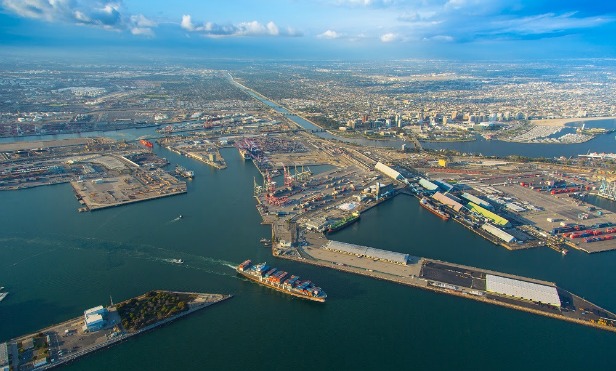 Cargo volumes have declined at the Port of Long Beach for the second consecutive month. In August, cargo volumes fell 1.9% compared to August 2017, coming on the heels of a 4.4% year-over-year decline in July of this year. Summer months are typically peak season for the port, however, ecommerce patterns are shifting the standard peak season, which could be contributing to the year-over-year shift. However, the primary driver of cargo volume declines have been the carrier alliances, which went into effect at the start of the year. For the first six months of 2018, the Port of Long Beach had steadily increasing cargo volumes.
Cargo volumes have declined at the Port of Long Beach for the second consecutive month. In August, cargo volumes fell 1.9% compared to August 2017, coming on the heels of a 4.4% year-over-year decline in July of this year. Summer months are typically peak season for the port, however, ecommerce patterns are shifting the standard peak season, which could be contributing to the year-over-year shift. However, the primary driver of cargo volume declines have been the carrier alliances, which went into effect at the start of the year. For the first six months of 2018, the Port of Long Beach had steadily increasing cargo volumes.
The carrier alliances were also a cause of the cargo volume declines in July, and the port expected to see the impacts in August as well. “We were aware some ocean carriers would shift and adjust their services based on their needs and what they were seeing in the market,” Eric Bradley, senior writer at the Port of Long Beach, tells GlobeSt.com. “If that had not happened, volumes likely would have been flat or seen an increase. Still, we are moving historic levels of cargo at the Port of Long Beach. Through August, we've handled 5.3 million twenty-foot equivalent units. That's 9.4% above the same point in 2017, our best year ever.”
While these alliances have had a negative impact on cargo volumes, this is more of an adjustment period, rather than a longstanding trend. “We're confident in our ability to attract and retain business from ocean carrier alliances,” says Bradley. “The Port of Long Beach has the best facilities, unmatched rail links and access to warehousing for goods coming into the United States from East Asia. We also have a big local market to serve in Southern California, the most populous region in the most populous state in the U.S.”
Typically, lower cargo volumes in the summer months would be cause for concern, but online shopping activity has changed the peak pattern. “In the past, the Port's 'peak season' would start in the summer months as retailers began stocking up for the holidays,” says Bradley. “With the rise of e-commerce, we're finding volumes are spreading more throughout the year, though container traffic does generally hit the highest points in the summer.”
In the month of August, the total of 679,543 TEUs moved through the port, with . 343,029 TEUs of imports and 119,546 TEUs of exports—an increase of the latter by 1.9% year-over-year. Empty containers sent overseas also dipped 1.1% to 216,968 TEUs. Depite the year-over-year decline, these are still record-level cargo volumes for the port's history, and a sign of strong consumer spending, according to Bradley. “Our container volumes are a reflection of spending in the U.S. economy,” he adds. “As long as that remains strong, we see our business remaining strong.”
Thanks to these strong numbers as well as record activity in the first part of the year, the port will likely exceed its total cargo numbers for 2017, which was a record year in its own right. “Despite two down months, our projections for the rest of 2018 show we will exceed last year's result,” he says. “We expect to finish this year ahead of our 2017 TEU total, which again, was the best in our 107-year history.”
© Touchpoint Markets, All Rights Reserved. Request academic re-use from www.copyright.com. All other uses, submit a request to [email protected]. For more inforrmation visit Asset & Logo Licensing.






